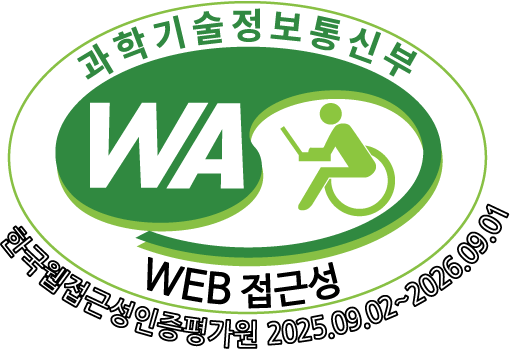본 연구는 급변하는 디지털 기술 환경 속에서 불확실성이 높아지는 미래 대응의 복잡성을 완화하고, 약신호(weak signal) 중심의 조기 탐지 체계를 구축하기 위해 수행되었다. 금년도 SPRi DaRT 2026은 EU, WEF, UNDP, Gartner 등 주요 기관의 미래기술 보고서를 기반으로 후보 기술을 추출한 뒤, 예비조사(미래연구 전문가)와 본조사(기술 분야 전문가)로 구분된 델파이 조사를 통해 30대 미래 신호를 선정하였다. 전문가의 반복적 평가와 피드백 과정을 통해 신규성, 영향력, 구현 가능성을 검증하였으며, 이를 바탕으로 100개의 후보 기술 중 30개 핵심 기술이 최종 확정되었다. 분석 결과, 전년도 SPRi DaRT 2025 대비 총 16개의 신규 개념기술이 새롭게 등장하였으며, 이 중 약신호 기술군은 양자 인터넷, 분산 AI 얼라인먼트, 양자 감지, 부상신호 기술군은 양자 AI, 대규모 행동 모델, 범용 AI 로봇, 제로 트러스트 아키텍처, 뉴로모픽 컴퓨팅, 운영 체제로서의 LLM, AI 간 통신, 촉감 홀로그래피, AI 기반 무선 접속 네트워크, 추세신호 기술군은 에이전틱 AI, AI 칩, AI 기반 칩 설계, 추론용 칩으로 구성되었다. 예년과 동일하게 델파이 조사 결과는 시각화 과정을 거쳐, 기술 시그널(약신호·부상신호·추세신호)과 미래 실현 시기(단기·중기·장기)를 한눈에 보여주는 형태로 설계되었다. 이를 통해 기술 변화의 방향성, 불확실성, 영향력의 상대적 크기를 직관적으로 파악할 수 있도록 하였다. 또한, 본 연구는 델파이 조사 결과를 보완하기 위해 데이터 기반 기술 전이 분석을 병행하였다. 2007년부터 2025년까지의 arXiv 데이터를 기반으로 논문 제목을 Sentence-BERT로 임베딩하고, K-means 클러스터링(k=100)을 수행하여 기술 주제의 연도별 의미 구조를 도출하였다. 이후 연속된 연도 간 클러스터 중심 벡터의 코사인 유사도를 계산하여 기술 전이(transition) 를 정의하였으며, 이를 통해 기술군의 생성(birth), 합병(merge), 소멸(death)을 시계열적으로 추적하고 약신호–부상신호–추세신호로 이어지는 전이 구조를 정량화하였다. 나아가, 본 연구는 약신호–부상신호–추세신호의 단계형 분류를 적용하여 약신호의 전이 구조를 시계열적으로 설명하였으며, 6대 주요 약신호 유망기술에 대한 심층 문헌조사를 병행함으로써 기존 점수 중심 정량기법 대비 예측의 해석가능성과 정책적 실효성을 향상시켰다. 또한, 약신호 조기 탐지 및 전환 예측 체계를 통해 R&D 투자 우선순위 설정, 기술 조기경보, 산업 전략 수립 등 정책·산업적 활용 가능성의 토대를 마련하였다. Executive Summary This study was conducted to address the growing complexity and uncertainty of future responses in the rapidly evolving digital technology landscape and to establish an early-detection framework centered on weak signals. The 2026 SPRi DaRT (Dynamic Radar for Trends and Signals) was derived by integrating Delphi-based expert assessments with data-driven transition analysis, providing a quantitative and visual representation of technological change over time. The SPRi DaRT 2026 identified 30 future signals through a multi-stage Delphi process consisting of preliminary surveys with futures-studies experts and main surveys with domain specialists. Candidates were drawn from major institutional foresight reports (EU, WEF, UNDP, Gartner), and evaluated for novelty, impact, and feasibility. Among the 100 candidate technologies, 30 key signals were finalized through iterative feedback and consensus. Compared to SPRi DaRT 2025, a total of 16 new concept technologies emerged. Among them, weak-signal technologies included quantum internet, decentralized AI alignment, and quantum sensing; emerging signals included quantum AI, large action models (LAMs), general-purpose AI robots, zero trust architecture, neuromorphic computing, LLMs as operating systems, AI-to-AI communication, haptic holography, and AI-radio access network (AI-RAN); and trend signals included agentic AI, AI chips, AI-assisted chip design, and chips for inference. To complement the Delphi findings, a data-driven transition analysis was performed using arXiv papers from 2007 to 2025. Paper titles were embedded via Sentence-BERT and clustered with K-means (k = 100), and cosine similarities between cluster centroids across years were used to trace technological birth, merging, and disappearance events. This approach quantified sequential flows from weak to emerging to trend signals, capturing the semantic continuity of technological evolution. Moreover, the three-stage signal classification—from weak to emerging to trend signals—enabled a dynamic interpretation of transition patterns over time. For six key weak-signal technologies, quantitative findings were supplemented with in-depth literature analysis, enhancing both the interpretability and policy relevance of the results beyond traditional score-based forecasting methods. This research establishes a foundation for early detection and transition prediction of weak signals, supporting strategic R&D investment prioritization, emerging-technology early-warning systems, and evidence-based industrial policy design.



